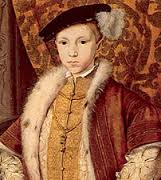Funeral Rites - Viking Burial
Funeral rites of Passage:
The burial of a Viking Noble.
Vikings invaded Britain in their impressive dragon prowed ships, to rape, pillage and burn. They looted monastries and killed the monks. (including Lindisfarne). This is the reputation vikings warriors left behind, as claimed in sgraffito runes on the walls of the Orkney Stone Age burial mound Maeshowe. The sensational accounts of their marauding ignore the fact that Vikings were skilled craftsmen, famed sailors, farmers and great traders Narrow viking boats could be sailed up shallow river waters and manoevered over land. They established the Volga trade running across Russia to the Black sea and reaching as far as Baghdad.
As they lived so they died. Their funeral rites of passage honoured the status of nobles and were testament to the fine skills of craftsmen. Burials would be on their Viking ship accompanied by fine grave goods, provisions, birds animals and a sacrificial servant or two; then covered with earth to leave a burial mound. Archaeological excavations of these burial mounds have yielded rich evidence of their craft, culture and achievements. Examples can be found at Sutton Hoo in Suffolk and Oseberg in Norway.
The Oseberg burial (834) is of an elderly Viking Queen thought to be Queen Asa the grandmother of the Norway's first King. She is aged around 80yrs old and the female buried with her is around 50 yrs old. There was not enough DNA to tell if they were mother and daughter. The prow of the ship was expertly carved with a dragon head. There were seats for 30 rowers. A full size replica has been made and proved to sail perfectly. The tomb was robbed in antiquity and valuable items stolen but there were plenty of items remaining. There were four elaborately decorated sleighs, a richly carved four-wheeled cart. Tapestries were preserved and the women's clothes, dressed as they had been buried in woolen dress cotton veil and silk and cotton petticoats. The burial also contained many animals and birds including a couple of Oxen, three dogs and fourteen horses.
So how were the rites of passage conducted. Historic accounts of viking burials are well documented (Ahmed Ibn Fadlan witnessed funeral of Chieftain on the Volga trade route). Funeral rites lasted over 10 days, involved all the community and were accompanied by feasting and drinking. The chieftain would be buried with a female slave from his household who volunteered for the honour. She needed to be very drunk before the ritual. An old lady acted as the Angel of Death laying out the chieftain and putting a rope round the slave's neck to strangle her before stabbing her.
The sacrificed slave only lived with the knowledge of her imminent death for 10 days unlike the victims of the annual Aztec sacrifice to the sun god (at the temple of the Sun Teotihuacan) who lived with the knowledge of the nature of their death for a year. Historic accounts could be highly coloured and their detail open to speculation. For all earlier cultures provision for life after death was a major concern. Early burial rites emphasised the importance of giving the dead prestige goods , food, drink and servants to company them to the afterlife. Indian widows used to be expected to throw themselves on their husband's funeral pyre, until the practice was banned over 100 years ago..
Big tombs in China could contain as many as 350 human remains, these were phased out with introduction of figurines was shown in the incredible revelations of 6000 terracotta warriors buried with the first emperor of China (210BC).



Comments
Post a Comment